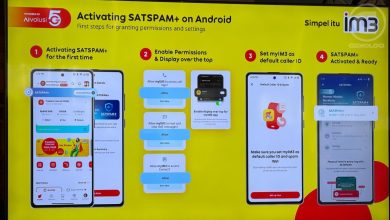Kaspersky Detects Over 1 Million Daily Tracking Attempts

Kaspersky‘s latest analysis of the 25 most prevalent web tracking services, including Google services, New Relic, and Microsoft, revealed over 38 billion instances of web trackers collecting user behaviour data in 2024, with an average of one million detections per each day.
Web tracking involves collecting, storing, and analysing data on users’ online behaviour. This data can include demographics, website visits, time spent on pages, and interactions such as clicks, scrolls, and mouse movements, which can be used for creating heatmaps and other insights. Businesses leverage this information to personalise experiences, boost user engagement, target ads more effectively, and measure the performance of their online services.
Kaspersky products feature a Do Not Track (DNT) component that blocks tracking elements designed to monitor user activity on websites. This feature enables Kaspersky to assess the current state of data harvesting by web trackers. To conduct this assessment, Kaspersky experts analysed the 25 most prevalent tracking services. These include four from Alphabet Inc. – Google Display & Video 360, Google Analytics, Google AdSense, and YouTube Analytics – as well as services from New Relic, and Microsoft, including Bing and other Microsoft tracking platforms. Their analysis revealed that 38,725,551,855 data collection incidents were detected in a year, from July 2023 to June 2024, with users sharing their data approximately 1,060,974 times per day.
Kaspersky’s Findings
The report provides a region-by-region analysis of the prevalence of various tracking services. Key findings include:
- Google Display & Video 360 holds the largest share among the top 25 tracking systems in Asia. In South Asia, it accounted for 25.47% of DNT component triggers, while in East Asia it was 24.45%. The smallest share was in the Commonwealth of Independent States (CIS) at 8.38%, where local tracking systems are more prevalent.
- Google Analytics, which tracks user behaviour and keywords to optimise website traffic and performance, has its largest share in Latin America (14.89%), followed by the Middle East (14.12%).
- Google AdSense trackers dominate in the Middle East (6.91%) and South Asia (6.85%), with the smallest shares in Oceania (3.76%) and the CIS (2.30%).
- The presence of these tracking systems has increased in almost all regions. While certain systems saw decreases in specific areas, others expanded, yet all belong to Google. This highlights Google’s pervasive user tracking, far surpassing that of any other company.
- YouTube Analytics has the highest share in South Asia (12.71%) and the Middle East (12.30%), and the lowest in Europe (5.65%) and North America (4.56%).
- Microsoft trackers have their largest share in Latin America (3.38%) and the smallest in the CIS (0.68%).
- Bing trackers show notable activity in Africa (8.46%), with their smallest presence in the CIS (0.77%).
- South Korea, Japan, and Russia, where local internet services are highly developed, regional tracking systems not only rank in the top 25 but can sometimes surpass global competitors.
‘”While the top 25 tracking services show that data collection isn’t confined to just a few companies, the more organisations store and process our information, the greater the risk of breaches. However, with most tracking handled by tech giants, there’s a strong motivation for them to protect user data and safeguard their reputations. Ultimately, though, users must take responsibility for their own data security, being mindful of the platforms they engage with and taking steps to protect their privacy,” comments Anna Larkina, Security and Privacy Expert at Kaspersky.
To learn more about web trackers in 2024, visit Securelist.com.




